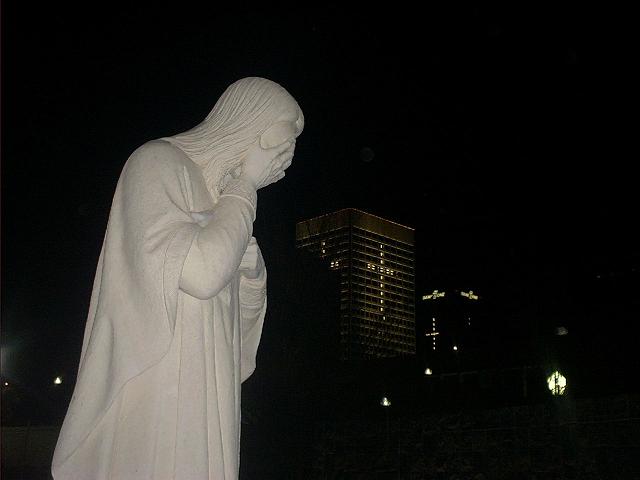
| It sounds weird to say this, but I'm glad that we stopped in Oklahoma City to see this memorial. It was a very moving tribute to the many people who lost their lives on the April 19, 1995 bombing of the Alfred P. Murrah Federal Building. |
| The Oklahoma City National Memorial |
| This statue of Jesus weeping replaced a church destroyed by the blast. Only the cornerstone of the church remained, which is fitting considering that upon that stone, a place of worship and healing would be built. Seeing Jesus, our Lord and savior, cry over such an act of destruction, touched my heart. |
| The fence outside of the memorial contained letters, ribbons, trinkets, jewelry, pictures, etc. left by the people who came to visit the memorial or pay tribute to those left behind. Every so often, these items need to be taken down and moved to the adjacent museum, where they are stored. The museum itself houses artifacts from the building found immediately after the blast, pictures of each person lost, and architecture that will bring hope for the future. After September 11, a special exhibit was created to help people involved in the terrorist attacks form a common bond with those who lost loved ones in the Oklahoma City bombing. Many people from New York, Washington D.C., and Pennsylvania attended meetings in Oklahoma City with those who witnessed this tragedy, and were able to share a common ground, with the people of the Oklahoma City bombing offering counseling on how to move on and how to remember those left behind. |
| For more information on the Oklahoma City memorial, go to the Oklahoma City National Memorial web site. |

| You enter the memorial through "The Gates of Time", two walls that represent the minute before and after the blast that changed time forever. 9:01 represents the minute where we lived our lives in innocence, knowing that nothing could harm us in any way. 9:02 is when the bomb exploded and changed our lives forever. 9:03 is the aftermath, where we piece together what we have left, rebuild for the future, and remember those that have been left behind. |
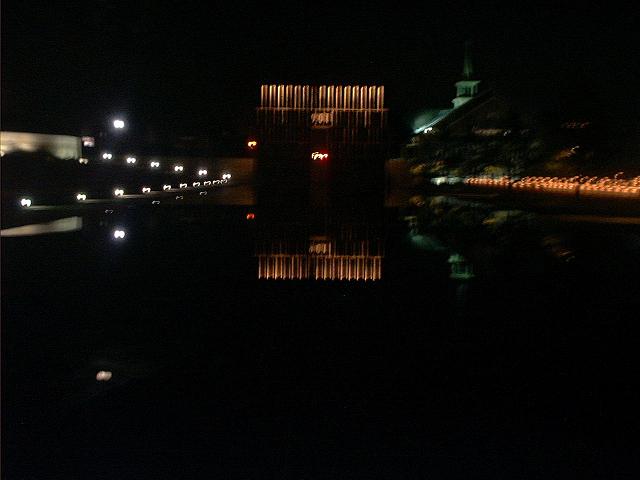
| The memorial itself consists of the two walls, with a reflecting pool between them. The pool's calm and shallow water is helps to soothe the pain and suffering, and to provide a reflection of a face forever changed. On one side, there is a solitary tree, an American Elm, that survived the blast on April 19. It stands to remind us that no matter what happens in our lives, we must stand tall and we cannot be defeated. On the other side, 168 chairs, 1 for every person that died on that day. Surrounding the memorial were the crumbled walls of the Old Federal Building, the only pieces that still stood after the bomb destroyed the existing structure. |
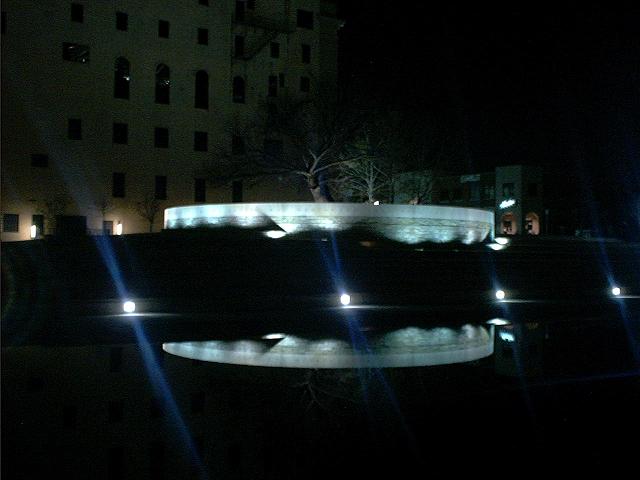
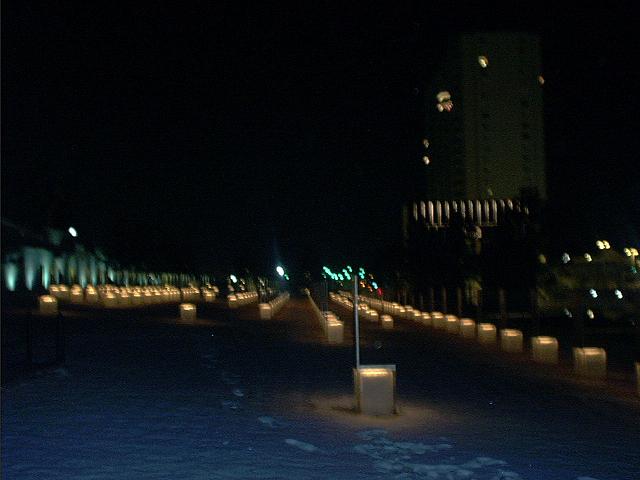
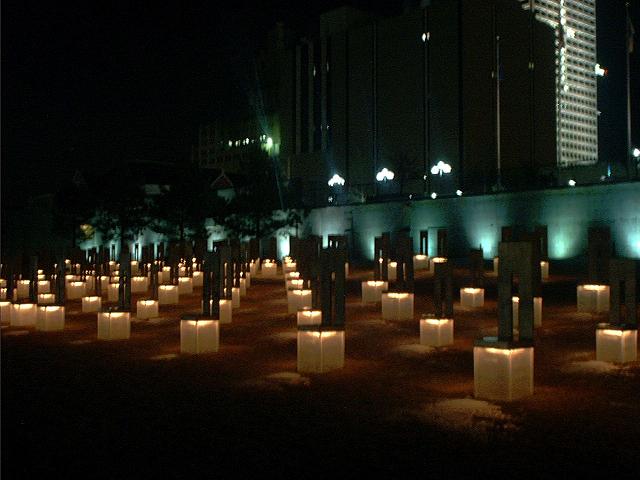
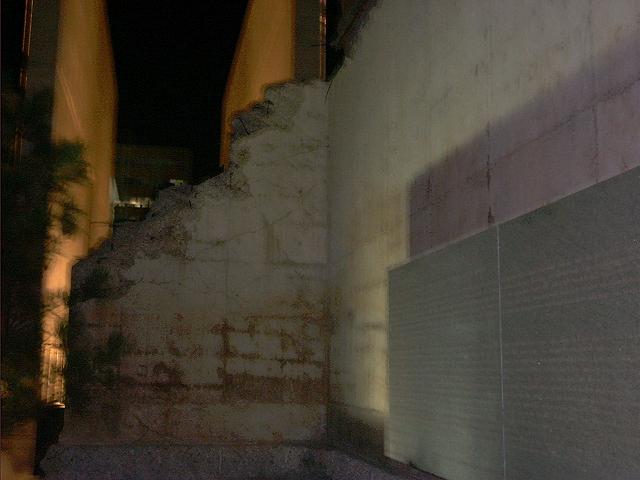
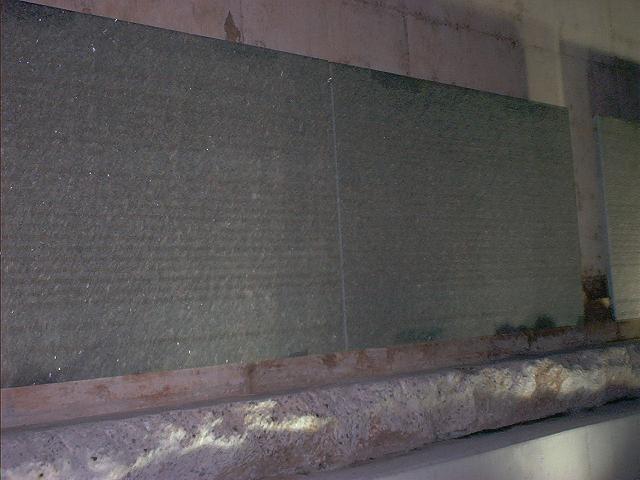
| There are 9 rows of chairs, with a 168 chairs total. The 9 rows represent the 9 floors of the building. Each chair was placed on the corresponding floor in which the person was at the moment of their untimely death. 19 of the chairs are smaller than the others, representing the 19 children that perished. A name is inscribed on each chair, and at night, the base of the chair is illuminated, representing a beacon of hope for the future. |
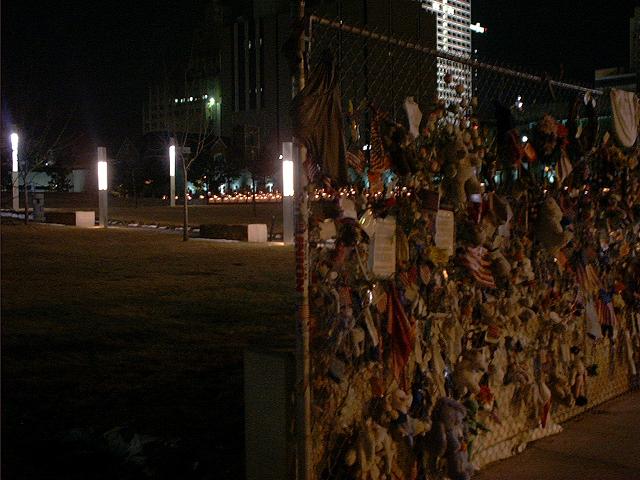
| This is what is left of the walls from the Federal Building. Added to these walls were stone tablets with the names of those who were killed or injured in the blast inscribed upon them. |
| Home |